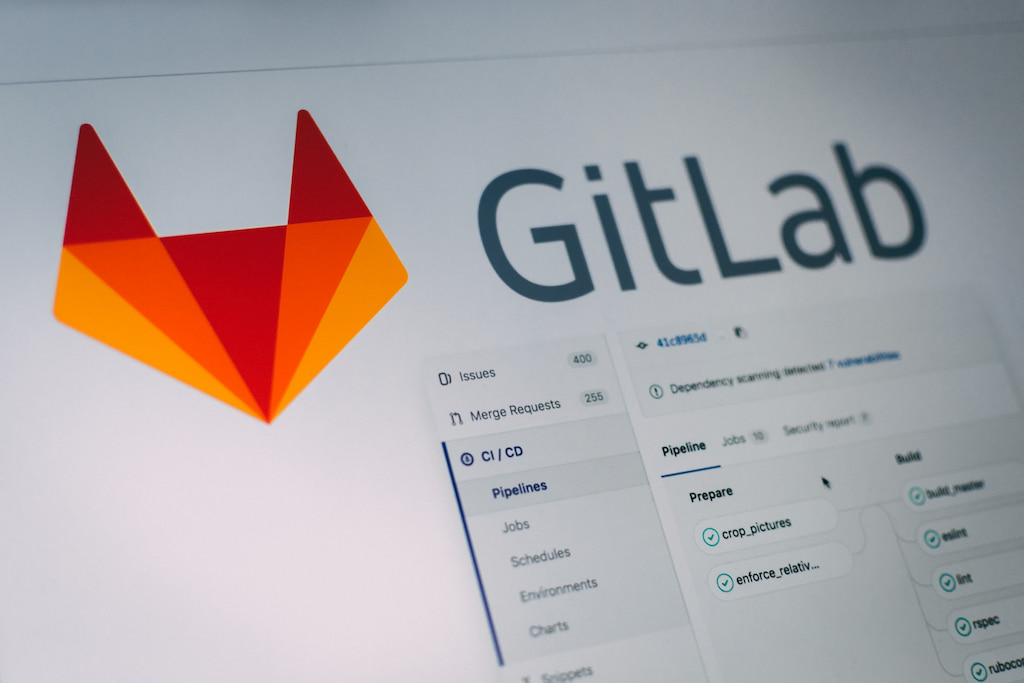GitLab is a widely used project management tool in tech and other collaborative fields. Its Git-based interface makes it easy for developers to work with code and contribute to repositories without needing to download Git. Beyond development, GitLab serves as a powerful project management tool for tracking progress, assigning tasks, and even GitLab time tracking. If you’re looking to use GitLab for project management, this article will show you how to enhance your workflow.
🚀 Using GitLab for Effective Project Management
GitLab integrates a range of project management features, including issue tracking, code review, and wikis, into one platform. It also accommodates any Agile framework, streamlining your workflow.

Agile project management focuses on transparency, interactivity, and feedback. GitLab addresses the challenge of needing a flexible platform to support Agile workflows, making it an ideal solution for software development projects.
In the following sections, we’ll provide a quick GitLab tutorial to help you get started with project management on the platform.
Epics
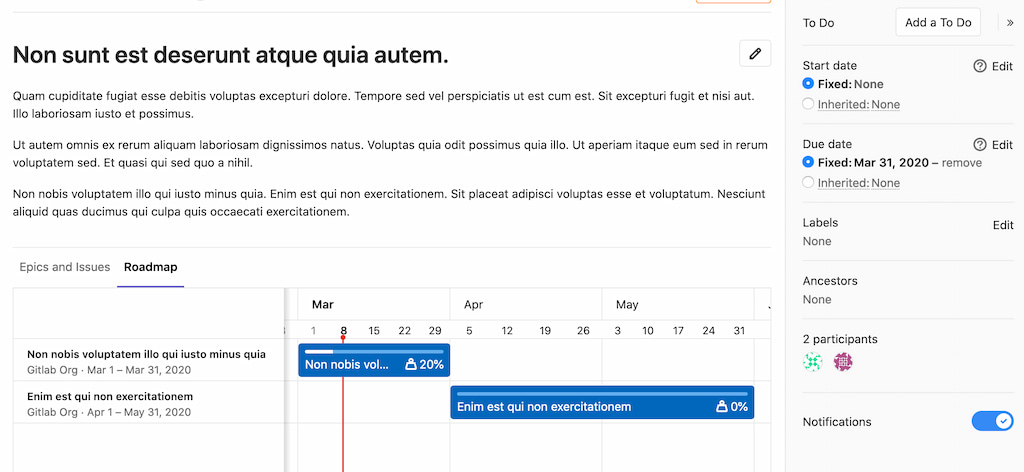
GitLab epics help organize issues by common themes, making it easier for project managers and developers to manage portfolios. You can create multiple levels with child epics and set start/end dates.
Epics enhance navigation for large projects and improve collaboration across teams on cross-theme issues. Group issues by themes like GraphQL upgrades, security, or user onboarding. Epic boards, available to Premium users, allow you to track and categorize epics efficiently.
Boards
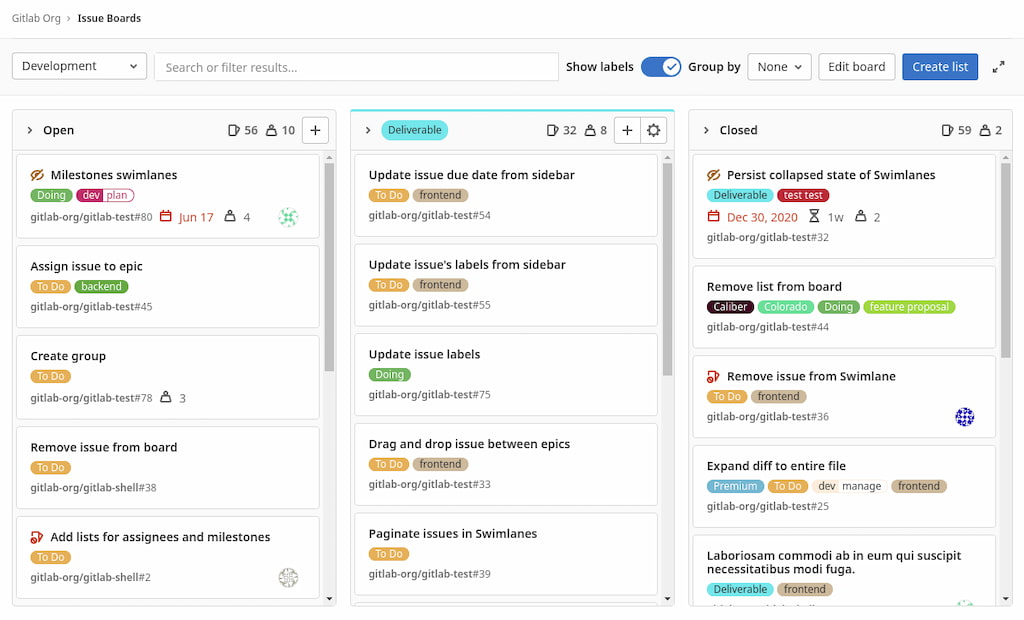
GitLab boards are a project management tool that’s included in GitLab. It provides an overview of issues assigned to you and your team members. You can create as many GitLab boards as you need to organize tasks, issues, and to-dos into different views, allowing you to understand your work better. Each board can have multiple lists, and each list can have an unlimited number of issues. You can also create a GitLab kanban board and GitLab scrum board, depending on which methodologies your team is most familiar with.
Regardless of what you want to do with it, using GitLab boards is perfect for project managers who want to have a better overview of their project’s progress, or for developers who want to organize their code better.
Milestones

GitLab milestones are a great way to track the progress of your project. You can use them to group issues and merge requests into a single timeline. The milestones also allow you to set due dates and assignees, helping teams work towards a broader project goal within a set deadline. This builds on the platform’s issue-tracking and request-merging ability that GitLab lets you do on a fundamental level.
Additionally, GitLab’s milestone feature is also flexible. You can use it to track the progress of your project on a weekly, monthly, or quarterly basis. You can also use GitLab milestones to track the progress of specific features, products, or services.
Roadmap
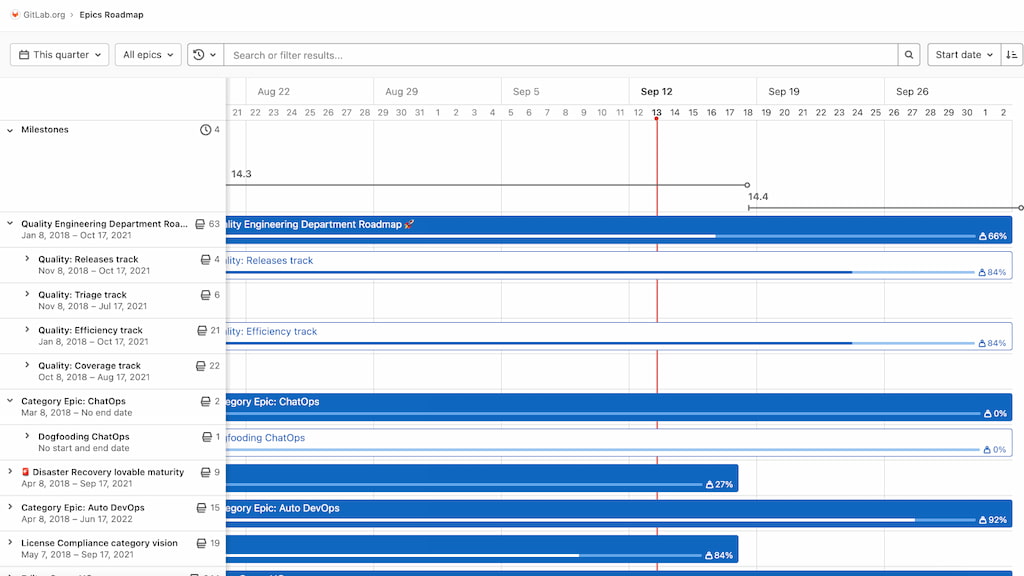
The GitLab roadmap allows for a top-down view of all the epics and milestones within a project. It’s a Gantt chart-style visual that maps out the progress of the project in its entirety. How the tasks fit into the larger deadline, task interactions, and even task dependencies can be easily identified and managed using GitLab roadmaps.
Every epic on the roadmap contains details, such as title, start and due date, completed weight percentage, and more. You can sort and filter roadmaps and access details on the epics it contains, such as the author, label, milestone, confidentiality, and more. This allows for easier project management, especially when it comes to task tracking and collaboration.
Issues
GitLab issues are a fundamental unit of work. By default, GitLab issues are used to track bugs, but they can be used to track anything that needs to be done. If you go to other project management platforms that are non-tech, issues would be the equivalent of single tasks or cards, although they can be much more than that. GitLab issues support user mentions, labels, due dates, assignees, weight, confidential notes, and more.
It also automatically creates an issue when you submit a merge request. GitLab will then link the merge request to the issue so that you can track the progress of both.
Labels
GitLab labels make tracking issues, epics, and projects much easier. GitLab also has a wide range of default labels that you can use to get started. These include To Do, Doing, Done, Won’t Do, and more.
You can also create custom labels to better organize your work. For example, you can create a label for a specific project, product, or client. You can even use label colors to make your work more visually appealing and easier to scan.
Projects
Projects are the widest categorization in a GitLab workplace, where everything will be based on your tasks, issues, epics, codebase, etc. One of the best features of GitLab is that it gives developers a ton of utility, including built-in CI/CD functionality to test your app’s deployment.
You can make an unlimited about of private GitLab projects, but public or internally available projects are limited depending on your subscription.
Groups
Groups act like folders to organize projects by category, helping project managers streamline tasks based on chosen themes. They can also restrict access to specific projects, controlling who sees them based on roles or needs.
Groups provide a unified view of issues, merge requests, epics, and more across all projects, enhancing organization and access.
Burndown сharts
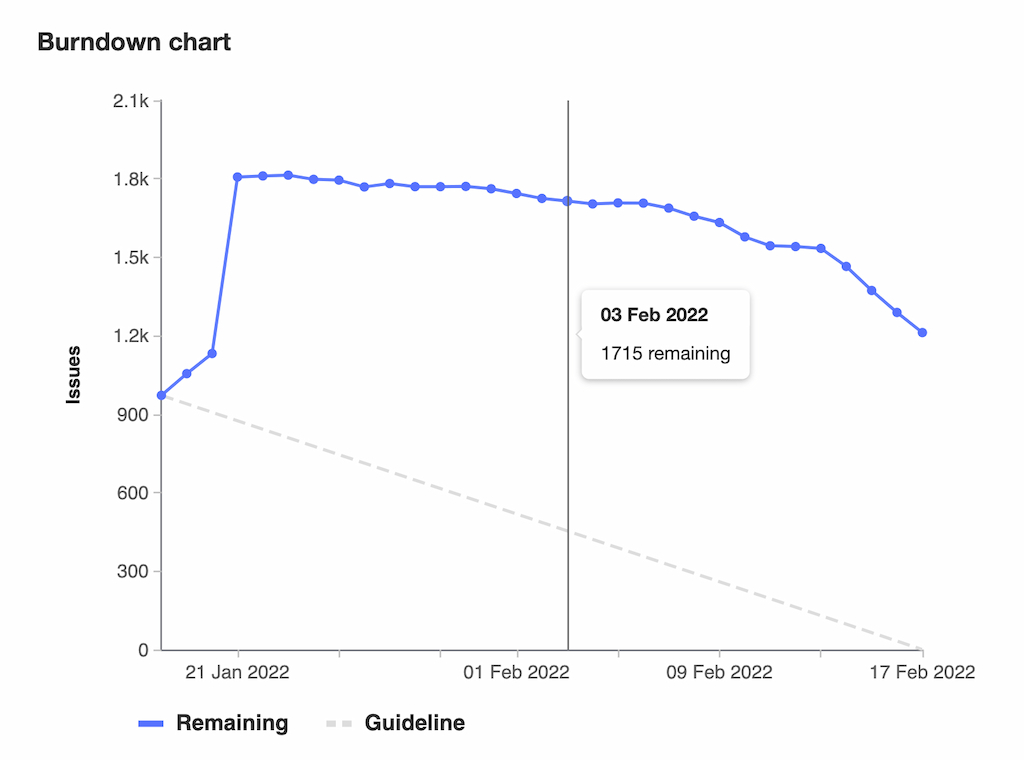
GitLab tracks milestone progress with burndown charts, offering live comparisons between milestones and completed tasks.
The platform consolidates project data into easy-to-understand graphs, helping keep large projects on track and meet deadlines.
This feature allows you to:
- Visualize milestone progress and identify gaps
- Assist teams by pinpointing potential issues
- Show progress to stakeholders and supervisors
Wikis
Teams can use GitLab’s wikis to enhance their understanding of their projects. Wikis let you document progress, notes, and meetings, among many others, and then store them in the same platform as the project you’re working on.
Every wiki is a different Git repository, and you can create pages on the web platform or locally. The wikis also support various languages, such as Markdown, RDoc, Org, AsciiDoc, and more.
Traceability
GitLab’s traceability feature lets you track changes and identify who made them by linking issues to the source code. Access this feature through the GitLab merge request or pipeline jobs page, offering transparency in complex projects.
It helps by:
- Automatically linking GitLab issues to merge requests
- Showing which merge request introduced a change
- Accessing pipeline jobs directly from issues
🔧 Best Time Tracking Tools and Integrations for GitLab
GitLab is a strong project management tool for software development, but it’s not perfect for all project management needs, especially non-technical logistics. While GitLab offers task tracking through issues, epics, and milestones, it lacks essential time-tracking features. Fortunately, other tools can fill this gap.
Everhour
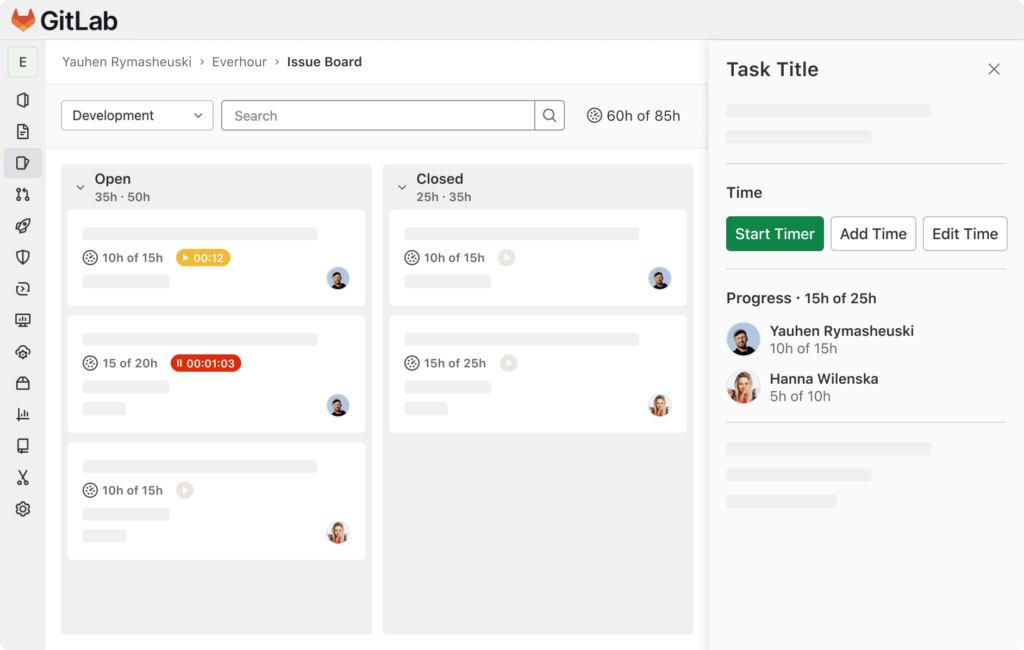
Everhour is a comprehensive third-party GitLab time tracking integration that works seamlessly with GitLab. It’s also an attendance tracker, time tracker, and work hour tracker, giving you everything you need for the best employee time tracking. You can also easily get your Gitlab time tracking reports and monitor how you’re doing in terms of your specific metrics.
This time clock app gives you everything you would ever need in a robust time tracker for teams of all sizes:
- Real-time time-tracking abilities
- Analytics on workplace performance
- Task assignments and team monitoring
- Team role and permission management functionality for managers
- Financial functionalities such as billing, invoicing, and budget comparisons
With this work hours tracker, all you need is to install and onboard your team members, and you will get a robust time tracker, analytics, and financial tool that will take care of the administrative aspects of running your agile DevOps team.
Features
Everhour has many features that are incredibly useful for managing your team’s work hours, whether they work in software development or otherwise. Here are some examples of the top tools and functionalities that Everhour has.
- Time tracking tools. This platform seamlessly functions as both a manual and automatic hour tracker for your employees and teammates to utilize.
- Budget and financials. Everhour allows you to invoice, create and compare budgets, customize customer rates, and more.
- Timesheets and work hour management. Simplify your administrative management with Everhour’s timesheet approvals, work hour management, work hour limits, etc.
- Organizational structure. This tool lets you decide on the roles and permissions of members, which is ideal for managers.
- Seamless integrations. Everhour integrates with many other project management software, websites, and apps.
Your team can utilize this to streamline your administrative tasks and make your work operations more efficient.
Pricing
| Free | Lite | Team |
|---|---|---|
| Free for up to 5 users | $6 per month billed monthly $5 per month billed annually |
$10 per month billed monthly $8.5 per month billed annually |
| Maximum 5 users | Minimum 2 users, maximum 10 users | Minimum 5 users, no maximum |
| Unlimited time tracking, projects, integrations, and reports Website integrations Time tracking iOS app, web, browser extension |
All Free features Budget and invoicing control Client features Reminders API Access to support |
All Free + Lite features Advanced time-tracking features Native integrations with sync Single sign-on (SSO) Priority support |
Time Doctor

This platform is one of the most popular time trackers for small to medium-sized teams. It has strong collaborative abilities and organizes time tracking to make it easier to communicate throughout the team.
Features
Here are some of the most notable Time Doctor features that you might want to check out.
- Integrations and offline availability. Time Doctor integrates with a lot of platforms and services. Aside from that, it also has a mobile version and an offline desktop app, making it very available for all team members.
- Custom reminders. Team leaders can set customized, automated reminders that allow teams to track their hours consistently.
- Streamlined management. Time Doctor gives you features that streamline your team’s management, such as employee monitoring and tracking.
- Team necessities. Team features such as team capacity, time spent, and more help you manage your team better.
Pricing
| Basic | Standard | Premium |
|---|---|---|
| $70/user/year | $100/user/year | $200/user/year |
| Activity and time tracking Projects and tasks Unlimited screenshots 3-day response time from support 1 group per department 1 month of data storage |
All basic features Apps and URL tracking 60+ integrations Access to payroll Daily email notifications 24/7 support Maximum 3 groups per department 6 months of data storage |
All standard features Client login access Concierge account setup Video screen captures Internet Connectivity Report 24/7 VIP support Unlimited groups and data storage |
QuickBooks Time
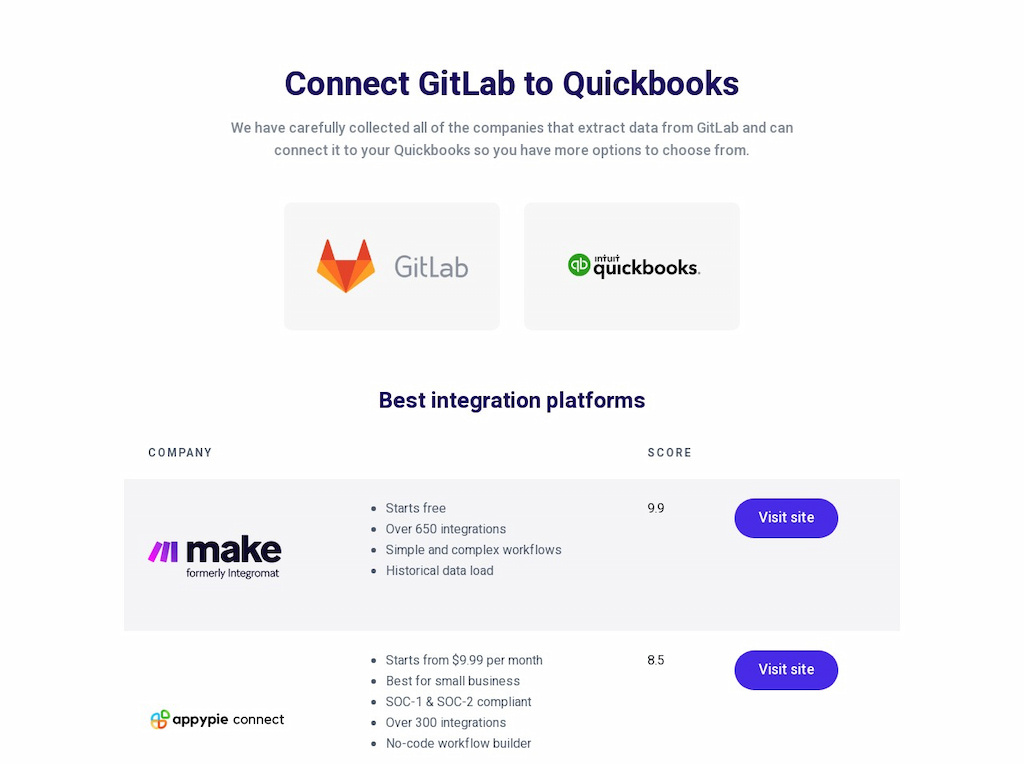
You can integrate Quickbooks into GitLab and use QuickBooks Time, another excellent tool. It’s a comprehensive time tracker that streamlines tracking through your desktop and mobile apps, allowing you to track your time however you work.
Features
Here are some of the best things that Quickbooks Time has to offer.
- Team management features. It’s easy to manage your entire workforce with this platform. You can track projects, time, schedules, mileage, and locations using Quickbooks Time.
- Employee scheduling and tracking. With Quickbooks Time, you can set schedules by shift, by job, or even manage employees remotely.
- Comprehensive reports. You can easily generate reports, such as time cards, payroll, and project reports, using this app.
- Multiple integrations. Quickbooks Time can integrate with over a dozen different apps and platforms for your convenience.
Pricing
The base app costs $20 per month, with an additional $8 per month per employee.
⌛ Time Tracking in GitLab Project Management Tool
GitLab is a top choice for tech teams and software developers. Even if you’re not in these fields, it’s a great tool for projects involving tech teams, especially when paired with GitLab alternatives.
However, GitLab lacks administrative features like time tracking, billing, and invoicing. Luckily, integrations like Everhour can fill these gaps, easing the administrative burden and letting teams focus on their core work.
